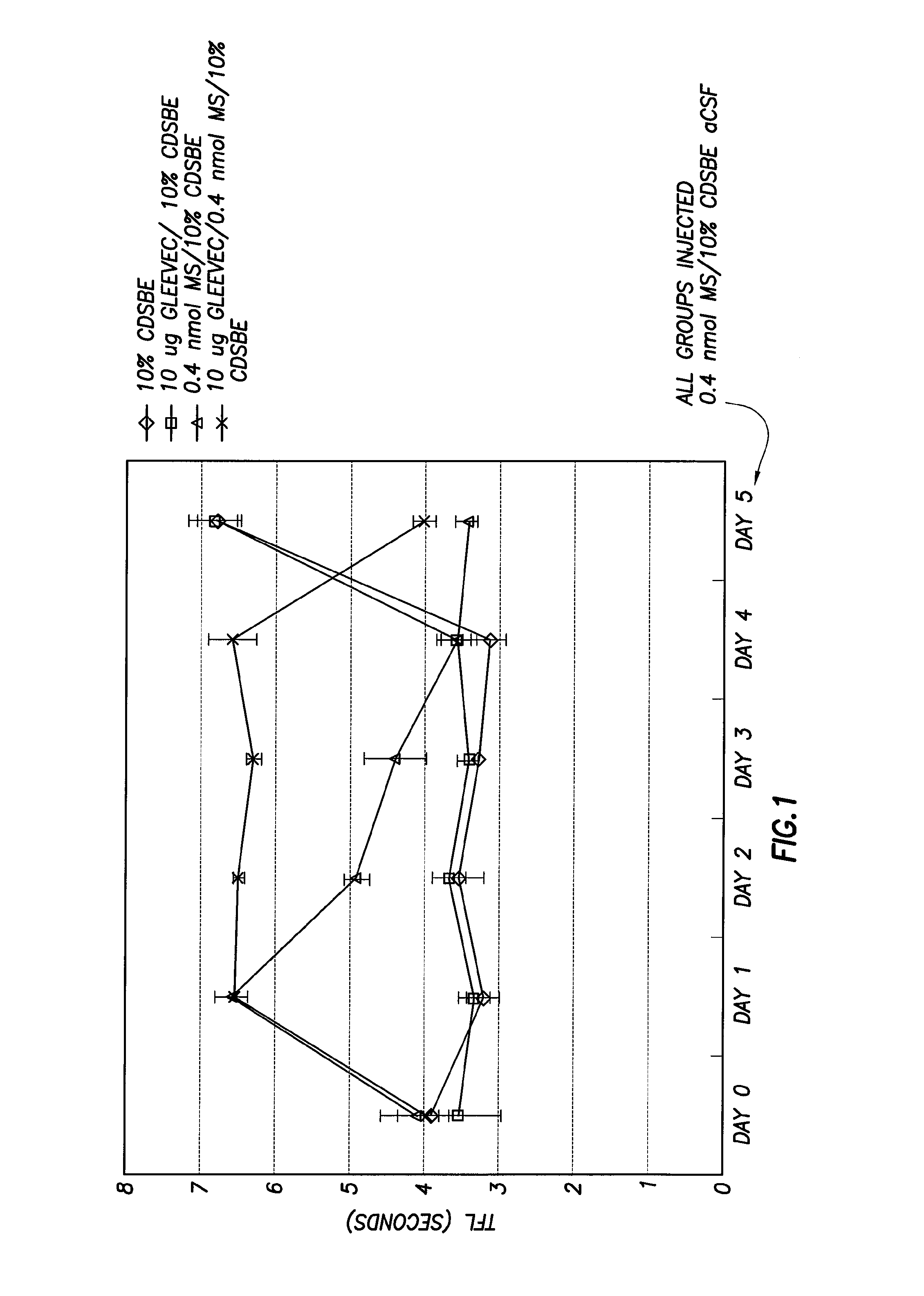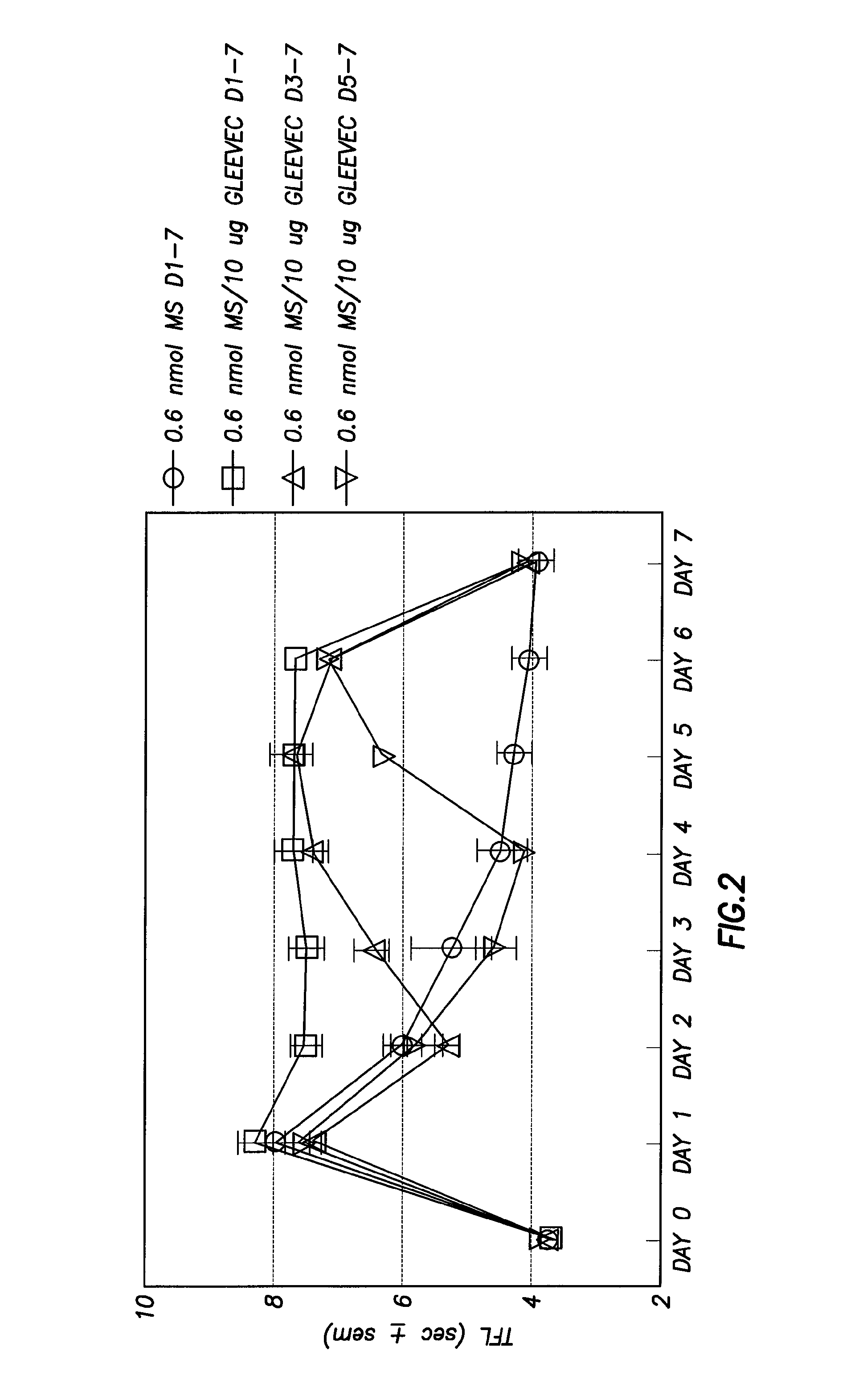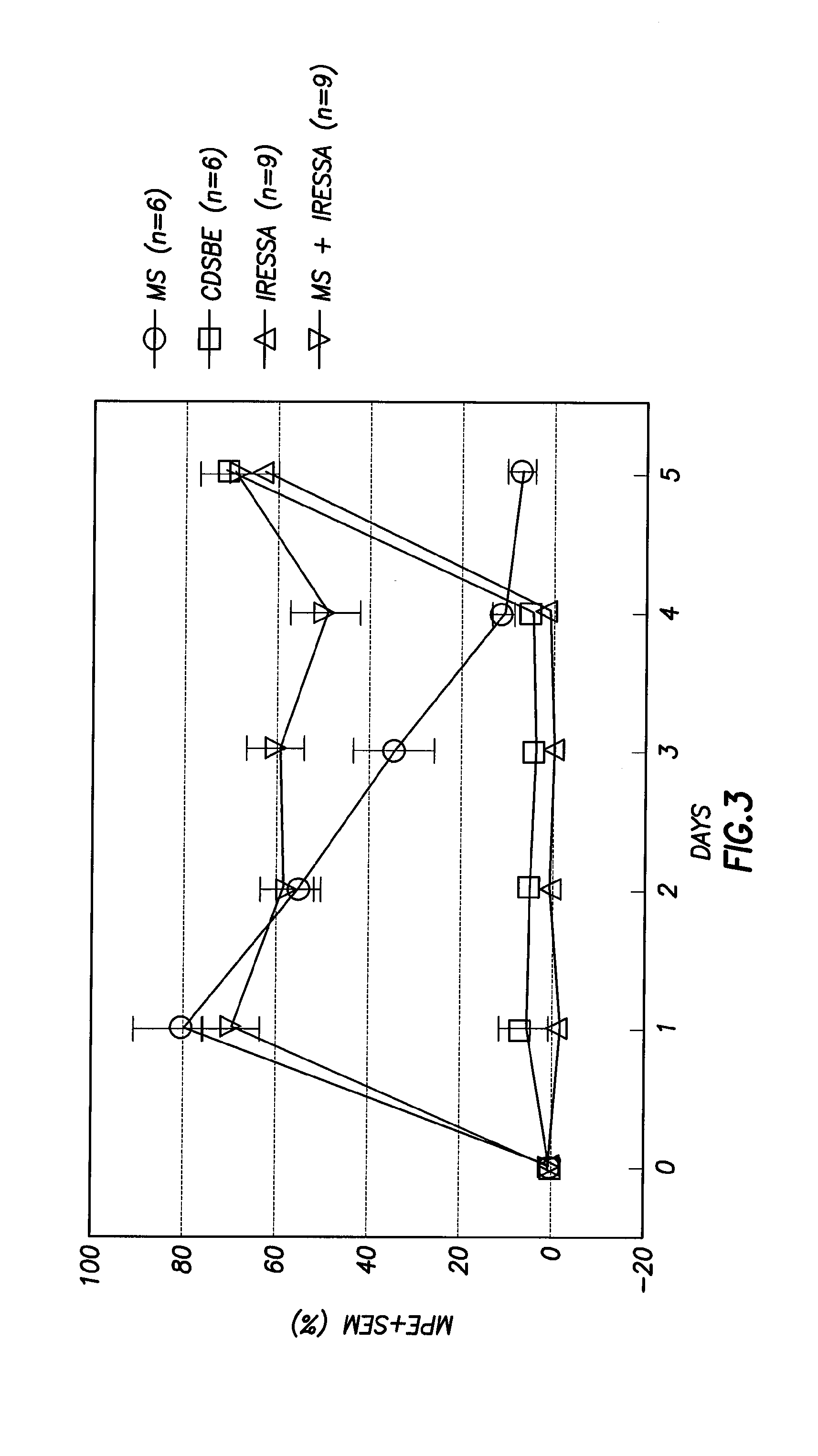Methods of Treatment of Opioid Tolerance, Physical Dependence, Pain and Addiction With Inhibitors of Certain Growth Factor Receptors
a technology of growth factor receptor and inhibitory treatment, applied in the field of analgesic agents, can solve the problems of limiting long-term use, unable to reverse established tolerance, and high toxicity, and achieve the effect of preventing, reducing and/or reversing opioid tolerance and facilitating combination therapies
- Summary
- Abstract
- Description
- Claims
- Application Information
AI Technical Summary
Benefits of technology
Problems solved by technology
Method used
Image
Examples
example 1
[0057]Analgesic effectiveness is typically studied using the tail-flick test, where a hot light is shined on a rat's tail and the time required for the rat to move (“flick”) its tail recorded (TFL, or tail flick latency). Initial studies showed that when imatinib was spinally administered it inhibited morphine tolerance.
[0058]To determine whether Gleevec blocked the development or expression of tolerance, morphine and Gleevec was co-administered for 4 days, and then on day 5 morphine alone was administered. The tail flick latency returned to baseline, indicating that Gleevec blocked the behavioral expression of morphine tolerance as shown in FIG. 1.
[0059]To determine whether Iressa blocked the development or expression of tolerance, morphine and Iressa was co-administered for 4 days, and then on day 5 morphine alone was administered. The tail flick latency remained prolonged, indicating that Iressa inhibited the development of morphine tolerance as shown in FIG. 3.
[0060]A drug can i...
example 2
[0063]Next it was desirable to determine if Gleevec could reverse morphine tolerance. NMDA antagonists, which are known to inhibit the development of morphine tolerance, can only partially reverse morphine tolerance, and cannot reverse established tolerance. In addition, NMDA antagonists are highly toxic (many are chemically related to PCP), which also severely limits their clinical use. To determine whether Gleevec could reverse established morphine tolerance, morphine was given for varying periods of time, and then Gleevec was added. The results are shown in FIG. 2, respectively. As expected, Gleevec inhibited tolerance when co-administered with morphine from the beginning. Furthermore, Gleevec completely reversed tolerance at varying points during tolerance development (including completely tolerant animals) after only two days of co-administration with morphine. On day 7, morphine alone was given to all groups. Animals were not analgesic, indicating that Gleevec inhibited the ex...
example 3
Methods to Test Inhibitors for the Treatment of Chronic Pain
[0064]To test the methods of treatment presented herein, we use the sciatic nerve ligation model of Chung et al. (model of neuropathic pain). Chung, J. M., H. K. Kim, and K. Chung, Segmental Spinal Nerve Ligation Model Of Neuropathic Pain, Methods Mol Med, 2004. 99: p. 35-45. Animals undergo this ligation procedure, are allowed to recover, and tested for pain sensitivity using Von Frey hairs and / or pressure testing. Animals were administered Iressa to observe if the inhibitors would reduce observed allodynia. Iressa and morphine administered individually had no effect upon allodynia. Remarkably, co-administration of morphine and Iressa provided analgesia after only one administration. See FIG. 4.
[0065]To test the methods of treatment presented herein, we use the sciatic nerve ligation model of Chung et al. (model of neuropathic pain). Chung, J. M., H. K. Kim, and K. Chung, Segmental spinal nerve ligation model of neuropathi...
PUM
 Login to View More
Login to View More Abstract
Description
Claims
Application Information
 Login to View More
Login to View More - R&D
- Intellectual Property
- Life Sciences
- Materials
- Tech Scout
- Unparalleled Data Quality
- Higher Quality Content
- 60% Fewer Hallucinations
Browse by: Latest US Patents, China's latest patents, Technical Efficacy Thesaurus, Application Domain, Technology Topic, Popular Technical Reports.
© 2025 PatSnap. All rights reserved.Legal|Privacy policy|Modern Slavery Act Transparency Statement|Sitemap|About US| Contact US: help@patsnap.com



